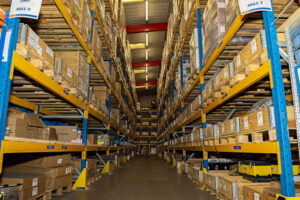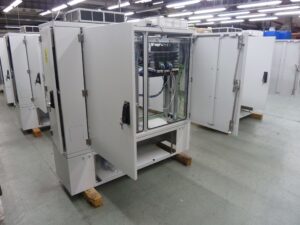There’s no doubt the telecoms industry has demonstrated its importance to society in the past few years. Throughout the coronavirus pandemic, UK-wide telecoms networks helped us stay connected and kept the country moving through some of the most challenging times. However, despite many businesses in the sector thriving during covid – indeed we recorded our highest ever turnover – there are still major challenges on the horizon.
Telecoms faces a double-edged sword: on one hand, there is growing demand to increase data power to fuel the advent of smart cities and ever greater connectivity. On the other, telecoms, like many industries, has a vital role to play in the race to achieve Net Zero. To be successful, we must strike a happy medium between the two: all telecoms operators rely on a sprawling network of data centres, relay stations and other infrastructure to deliver connected services; infrastructure which requires a constant supply of power to deliver. There’s no doubt that our job is carbon intensive.
Take the 5G rollout as an example. It’s easy to identify the benefits of 5G, particularly when you look at the future of mobility and smart cities. However, it is reported that 5G could prompt energy consumption to grow by 160%[1] in the space of just 10 years. How can we deliver this critical service while mitigating our impact on the planet?
Telecoms also has a positive impact
Of course, telecoms is not the only culprit when it comes to sustainability and indeed, the sector also has a positive impact. For example, rapid broadband networks make it easier to work from home, reducing workplace commutes which in turn, reduces on-road emissions. We have also seen stories from major telecoms businesses that are powering infrastructure through renewable energy sources. Therefore, it is possible to offset our environmental impact and embed regenerative design practices into our work.
This remains at the forefront of our minds at CHH CoNeX and we are looking for ways to utilise existing resources where possible in our work. For example, the installation of new networks typically requires the production, installation and logistical work associated with installing new data cabinets or enclosures. Instead, you can save energy and resources by utilising existing street furniture to install telecoms equipment. There is already a lot of discussion in the UK around installing electronics into lamp posts, CCTV columns and anything that already has a strong infrastructure and is capable of supporting a small cell. This is known as densification (see our blog post on this here). This could become a major enabler of the country’s 5G roll out and resolves the challenges associated with installing an increasing number of new cabinets in areas where space is at a premium. It also negates the energy required to manufacture, manoeuvre and install new equipment in urban areas.
In addition, we are taking small steps today to minimize our environmental impact as an organisation. For example, we are currently going through the process of securing ISO 14001 accreditation. When implemented properly, ISO 14001 is an environmental management system that provides companies with the processes and procedures to support strong governance and the drive towards becoming sustainable.
The accreditation will support continual improvement on our sustainability journey and ensure that such issues remain integral to our culture and our philosophy.







